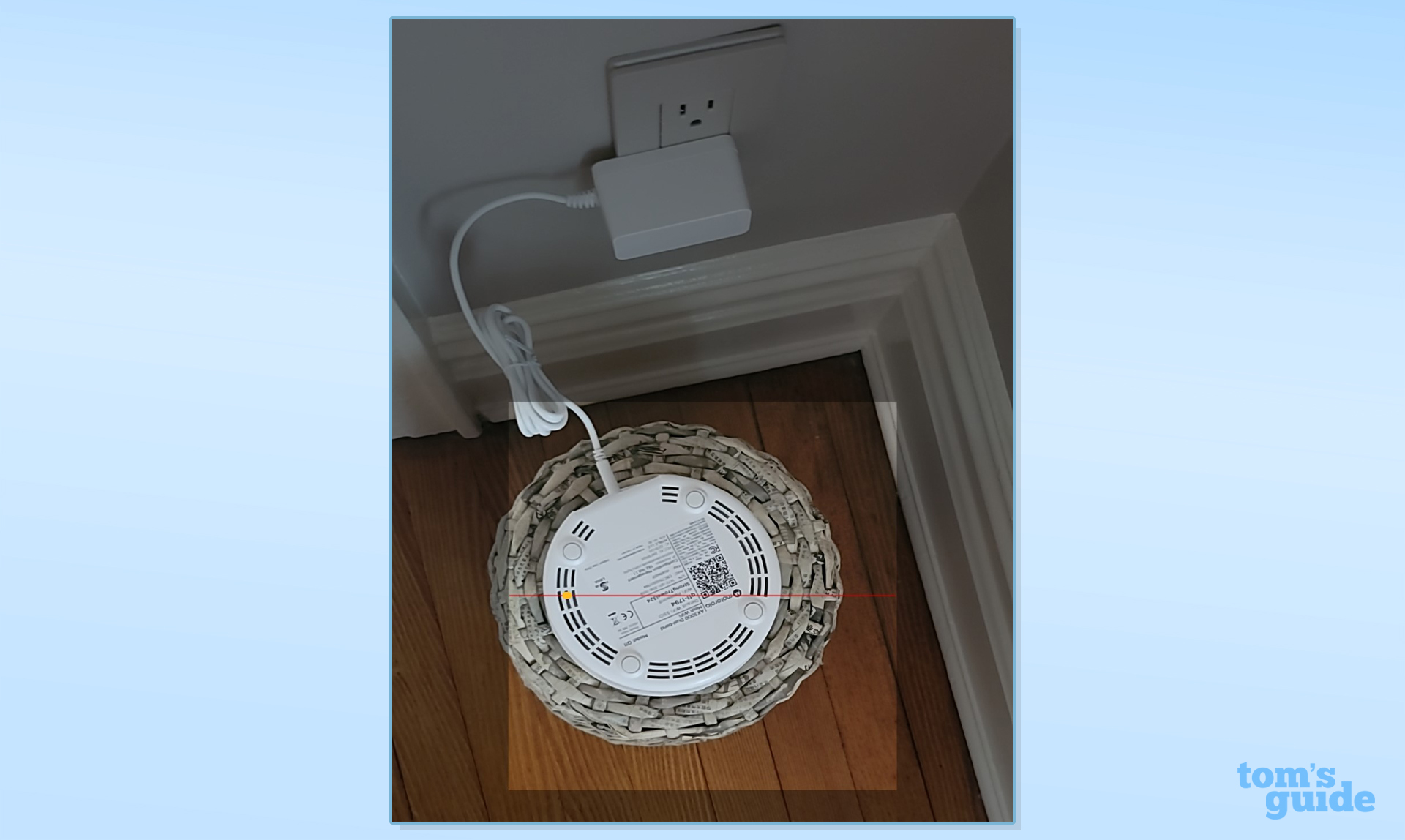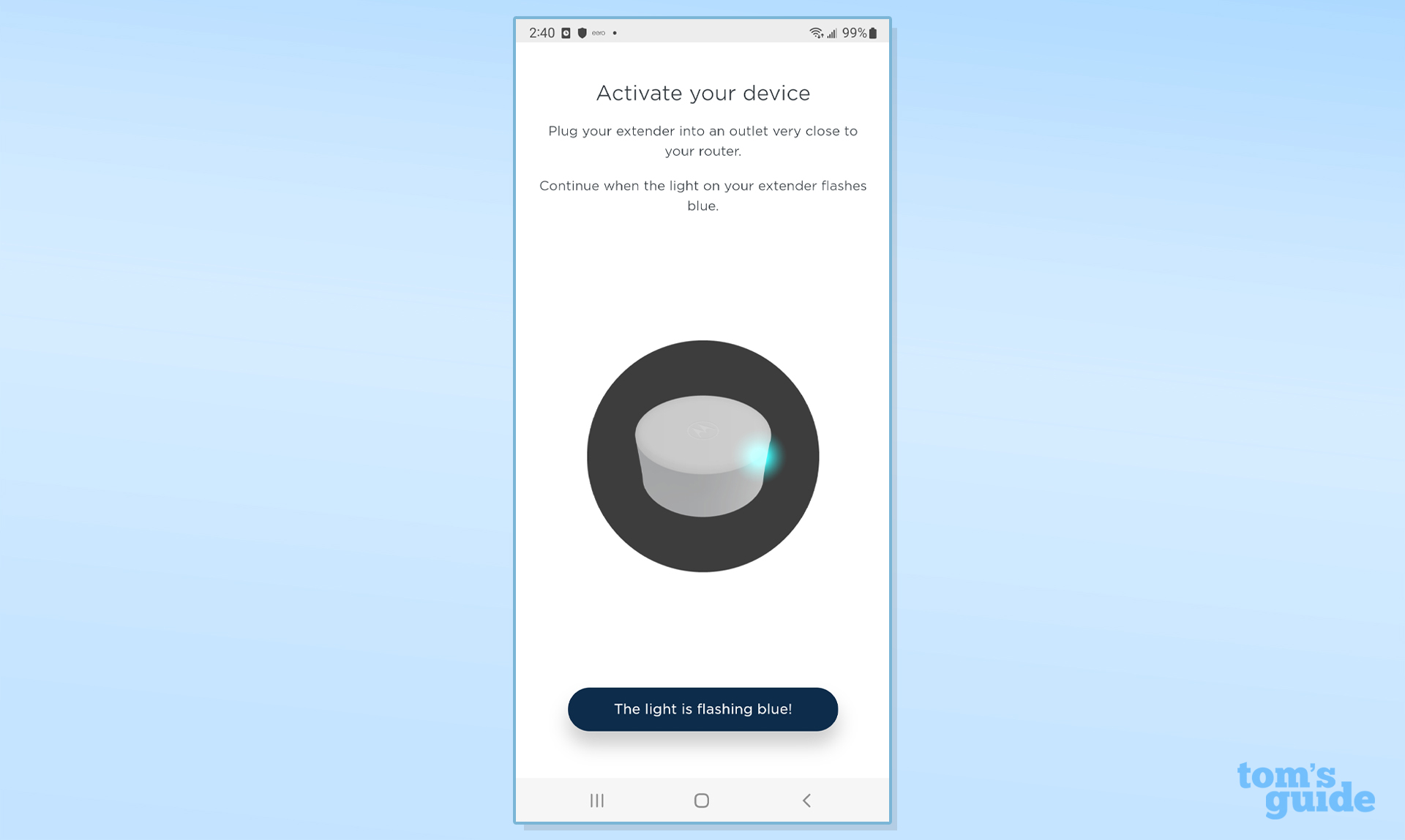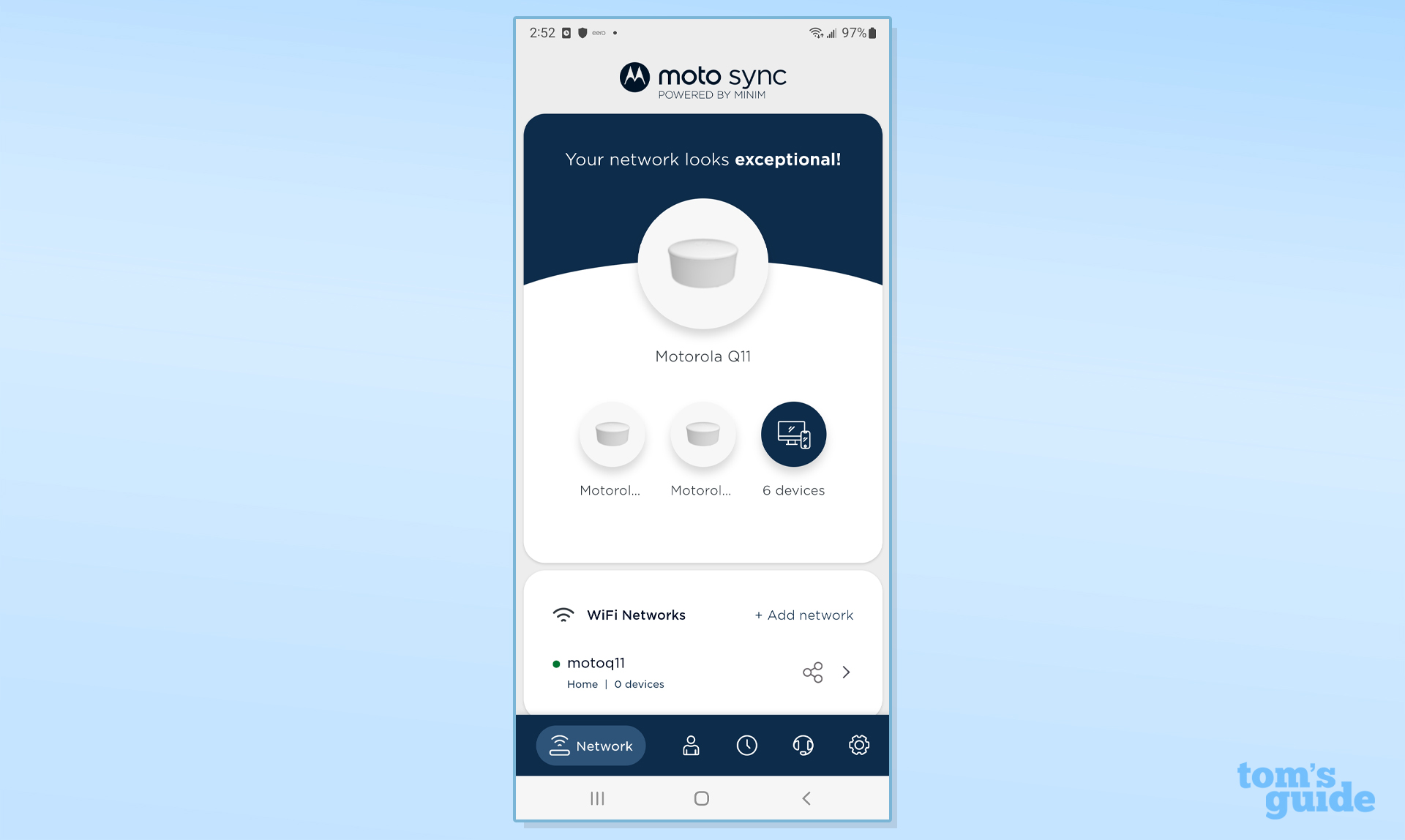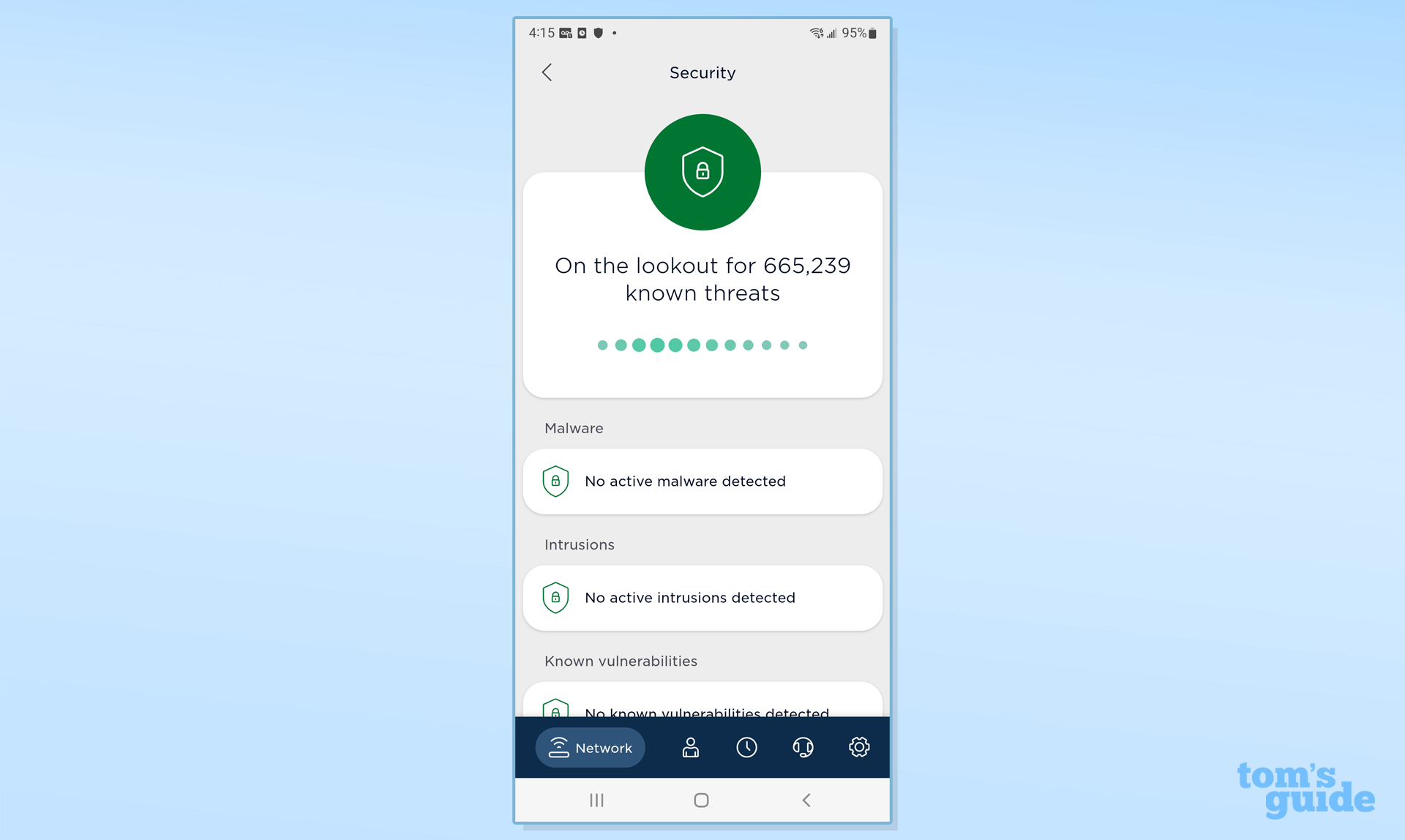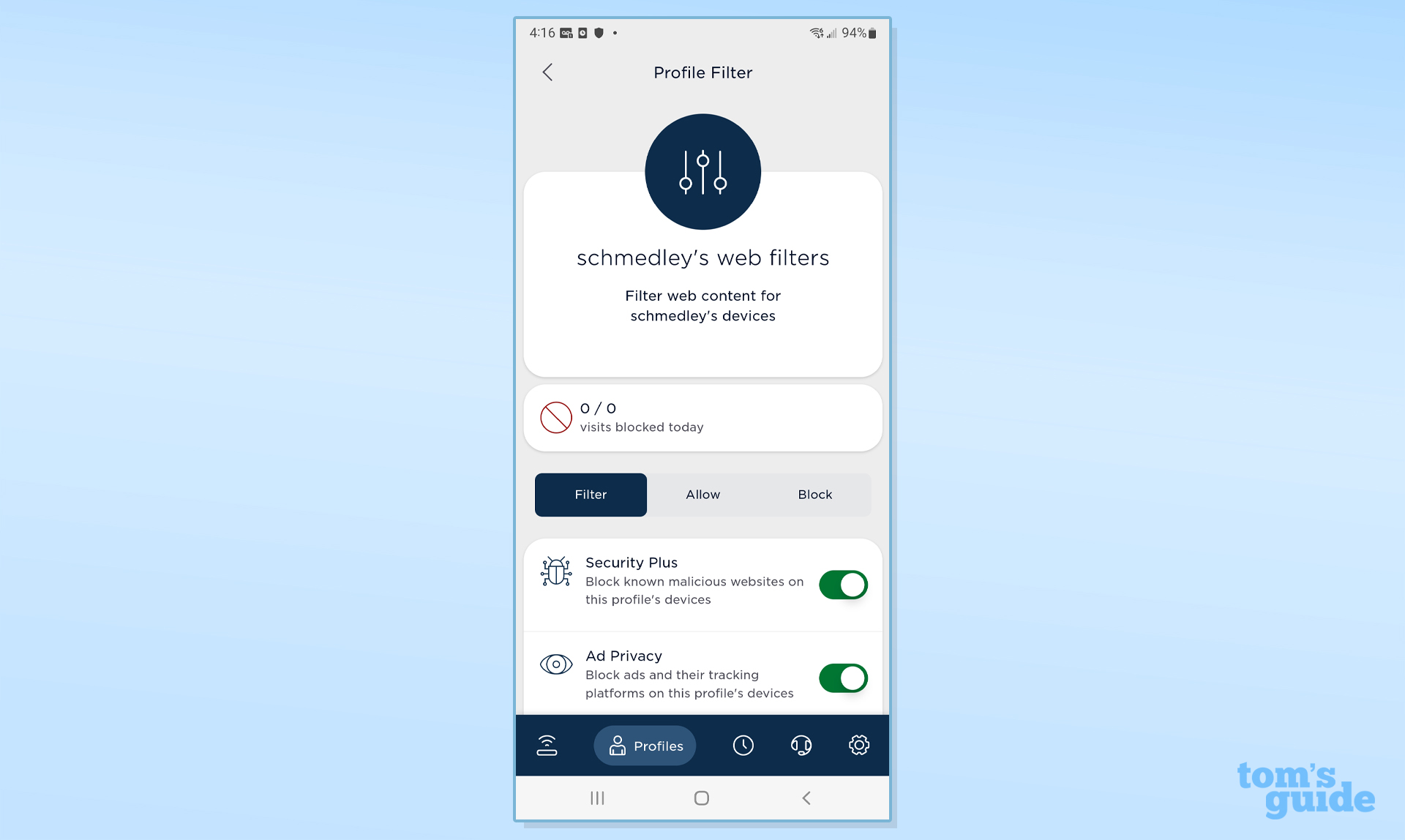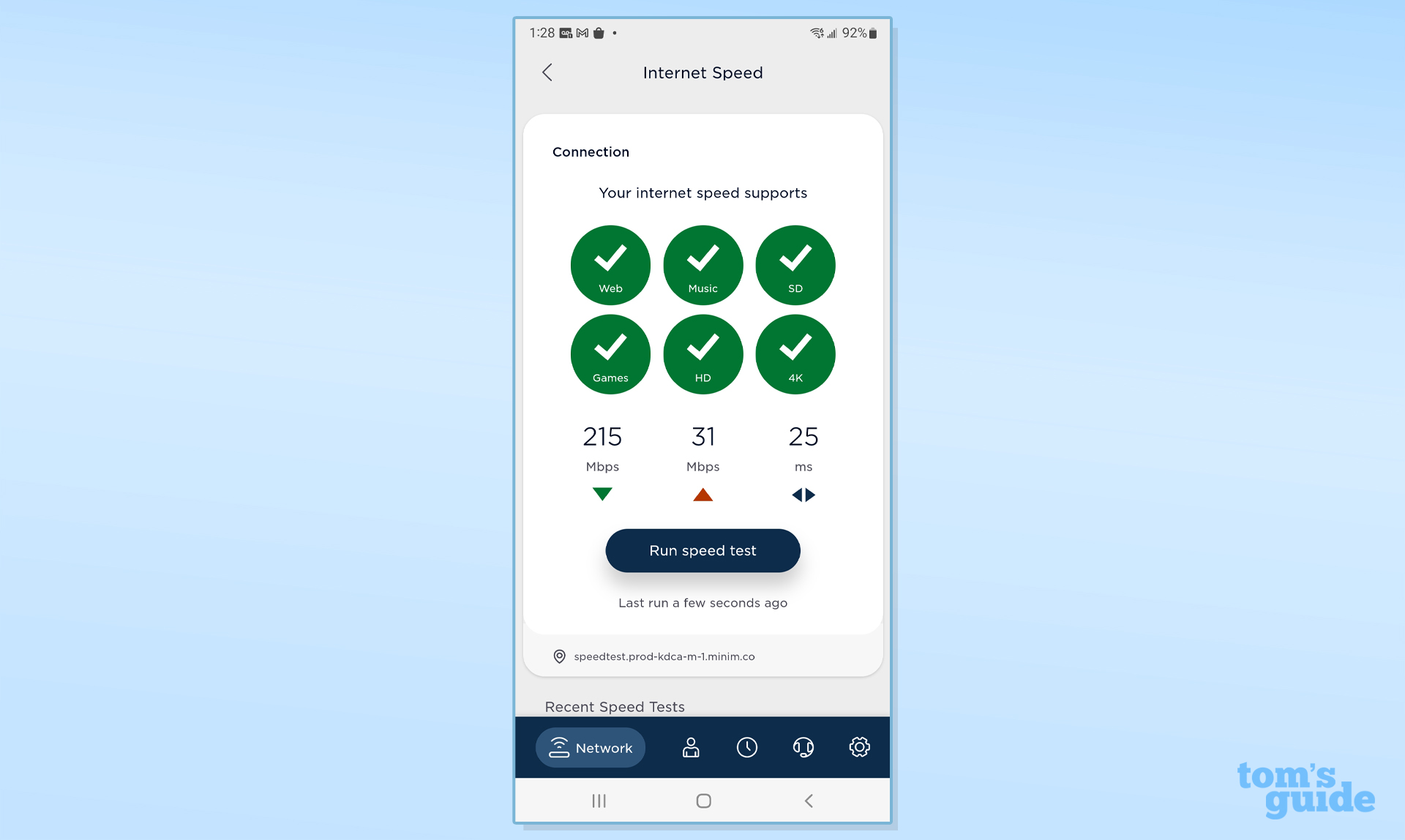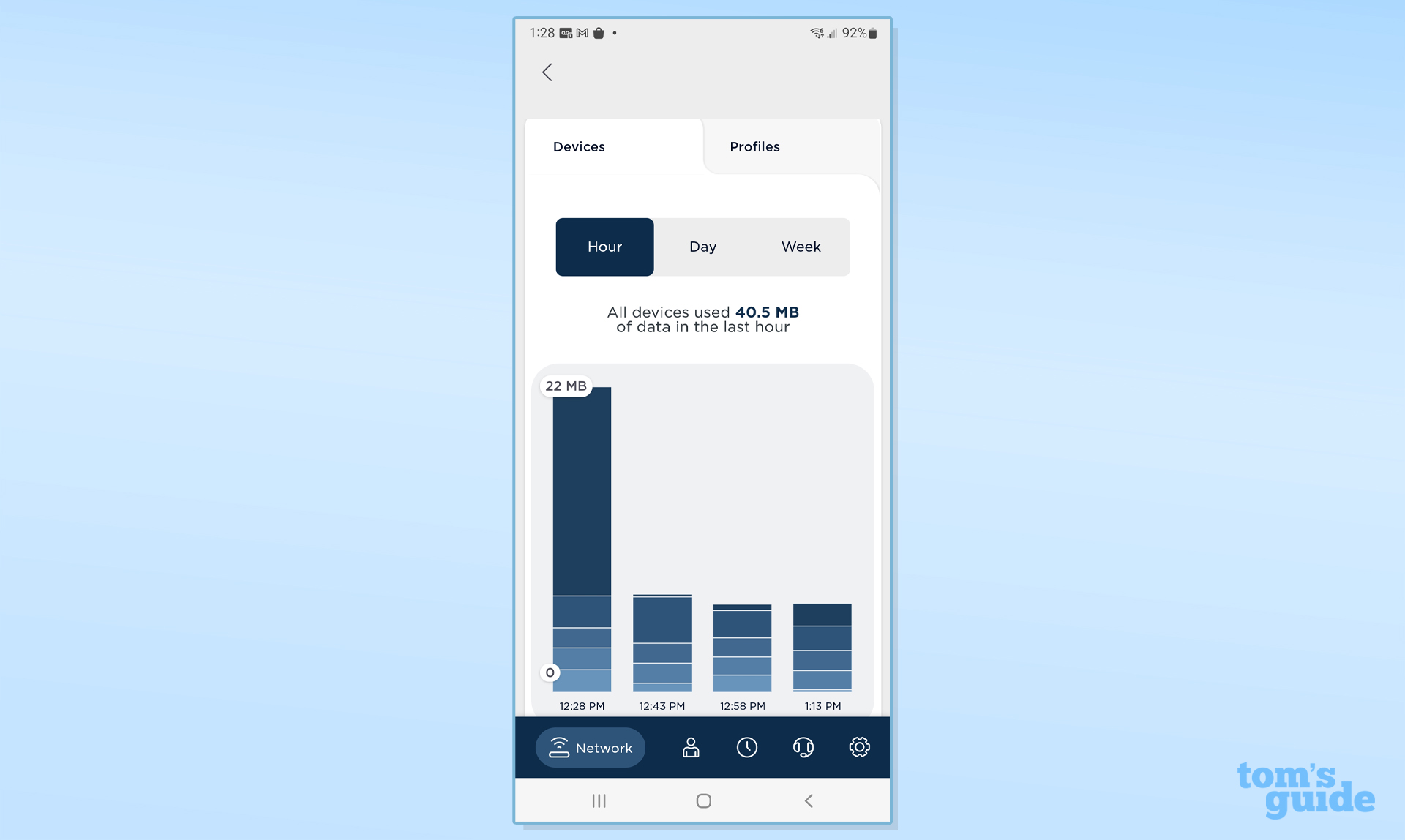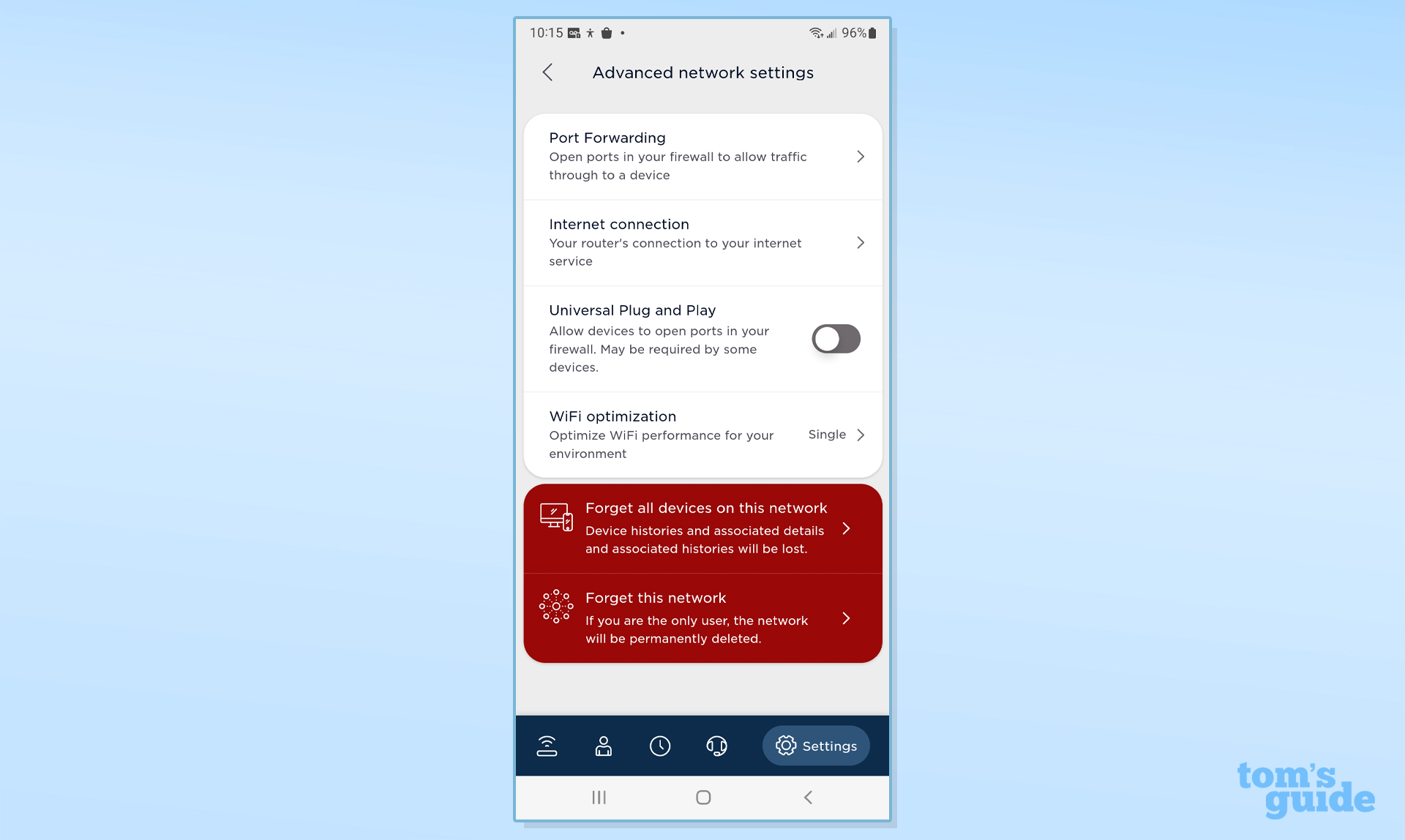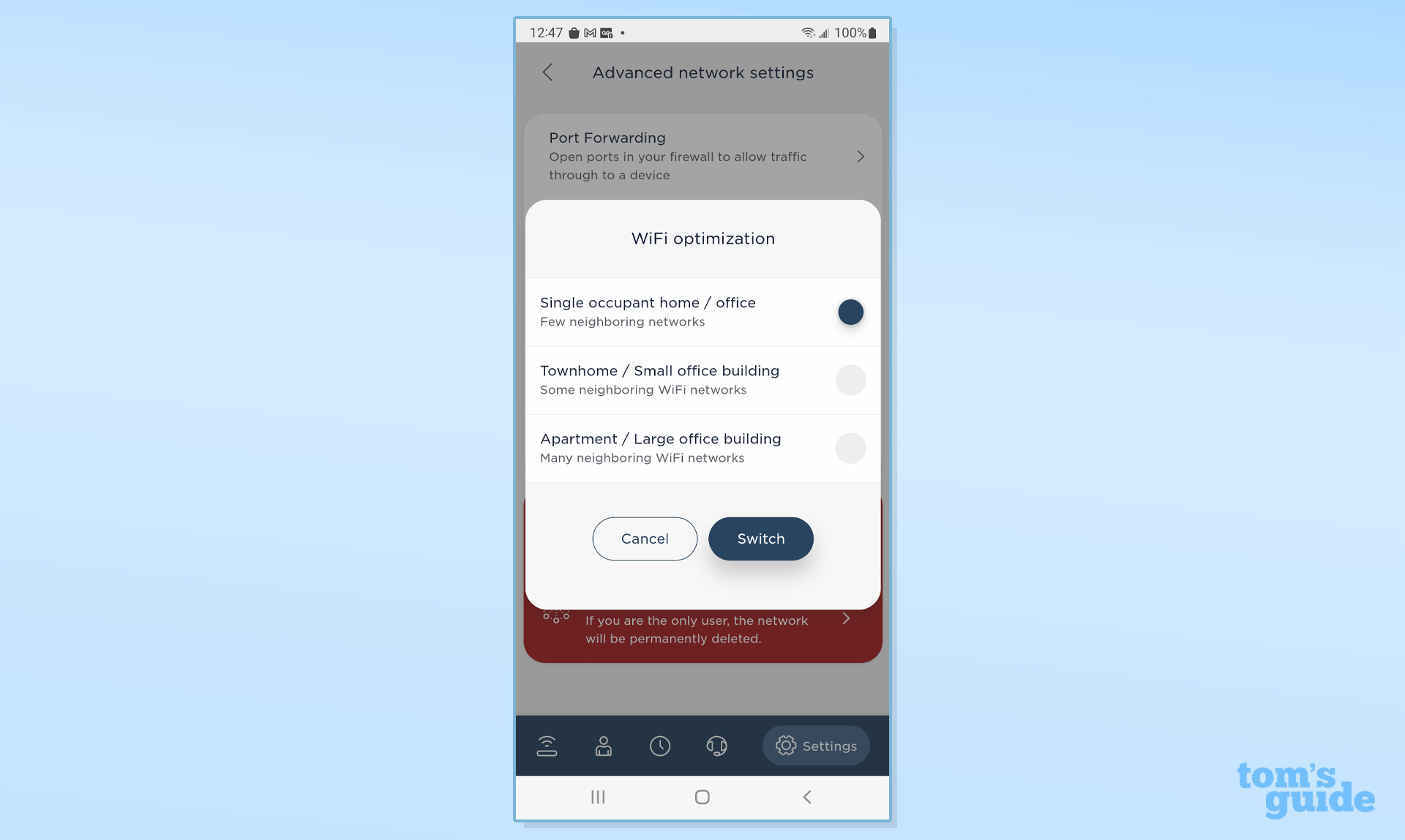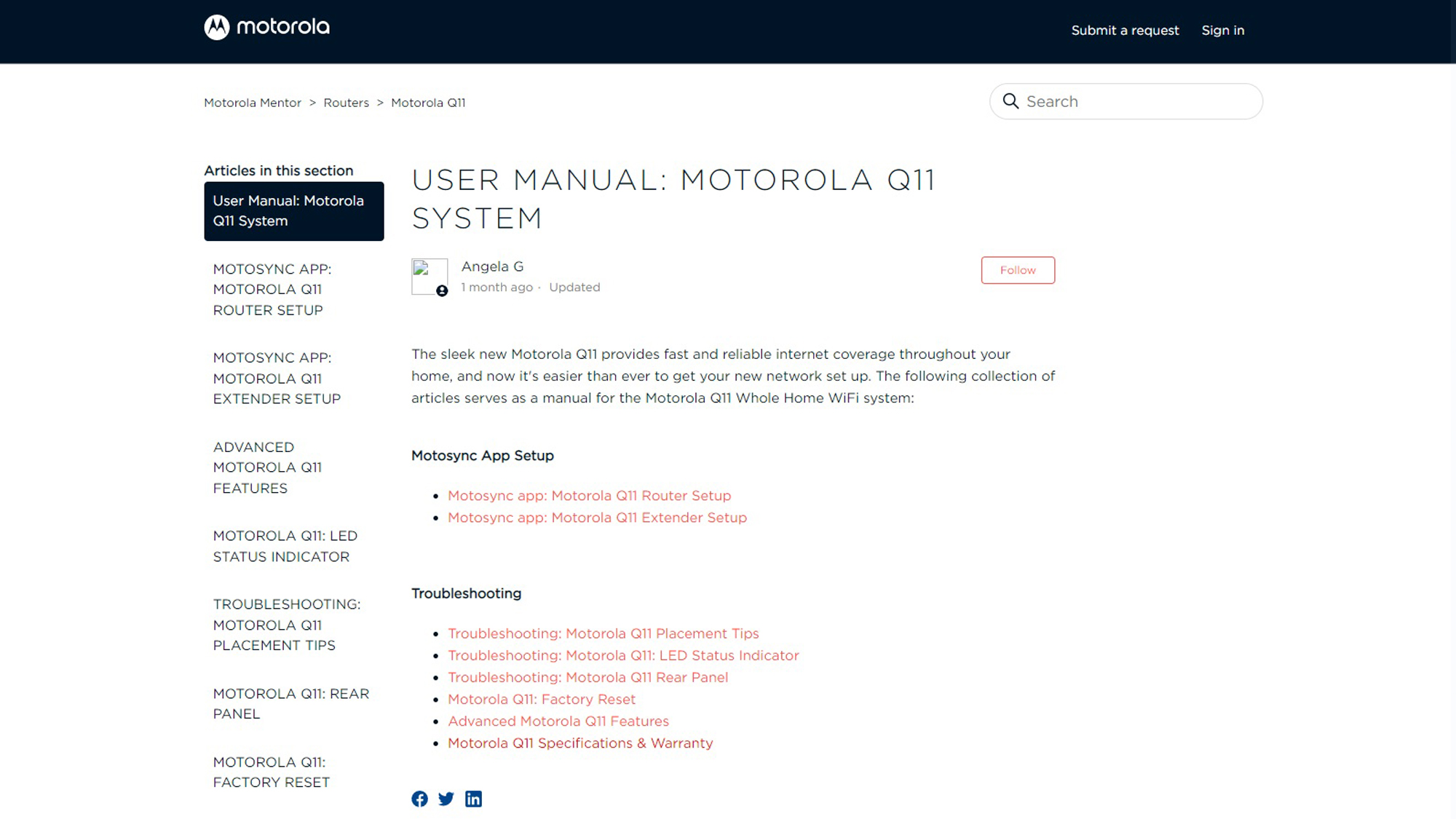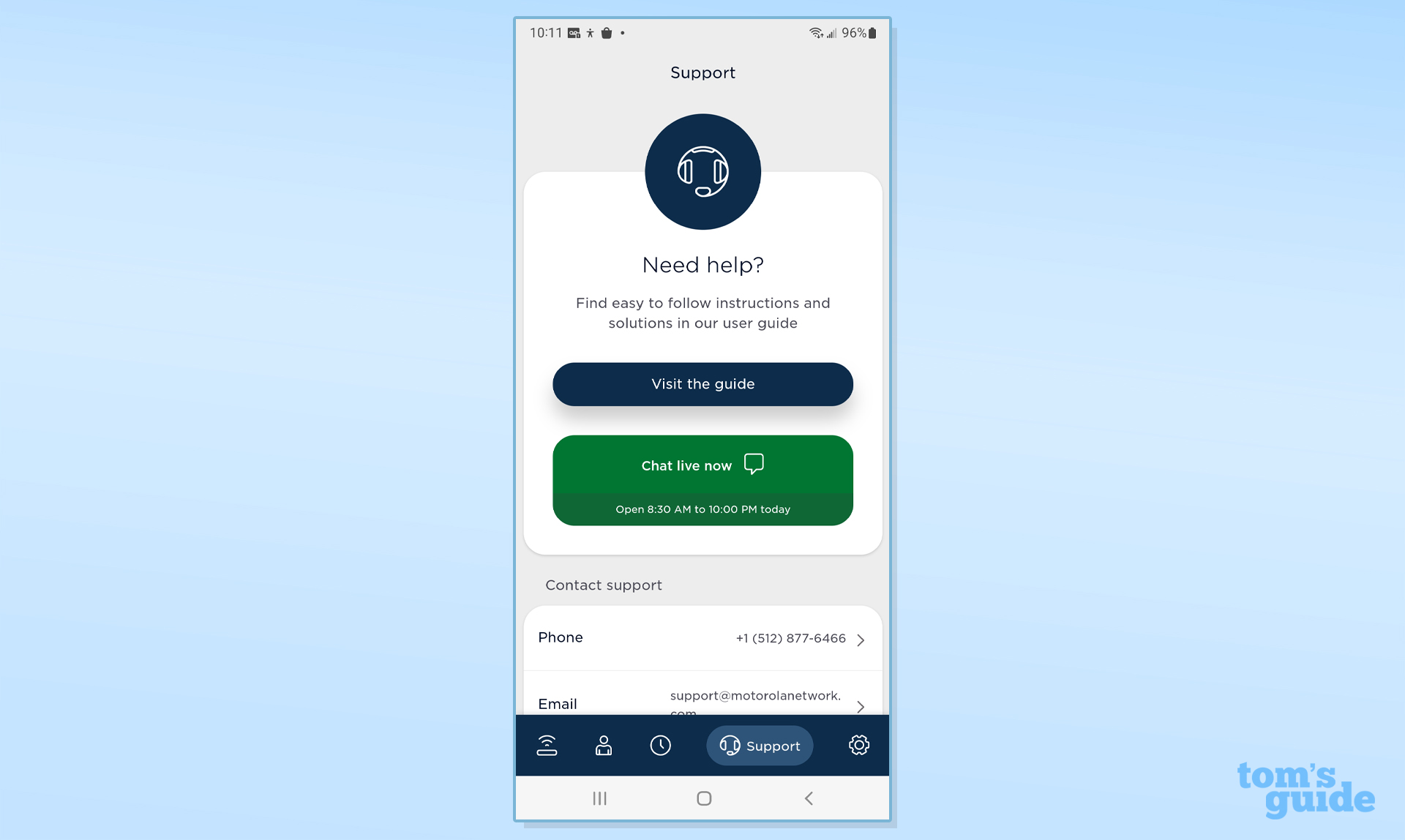Tom's Guide Verdict
While the Motorola Q11’s simple set up process, included security software and good throughput close-up add up to a top ranked mesh kit, it falls short of the mark when it comes to overall performance. Still, it’s a bargain at less than half the price of other Wi-Fi 6 mesh routers and just might be enough for most homes.
Pros
- +
Inexpensive
- +
App has direct link to support chat
- +
Simple setup
- +
Includes malware scanning, ad blocking and content filter
Cons
- -
Mediocre overall performance
- -
Only has two LAN ports
- -
Lacks 24/7 support
- -
No USB ports
Why you can trust Tom's Guide
Wi-Fi Spec: AX3000
Number of Antennas/Removable: 2/No
Ports: Router and satellites– 2 Ethernet
Processor/Memory/Storage: quad-core 1.5GHz/128MB/256MB
Wi-Fi chip: Broadcom BCM6756
Peak 802.11ax performance: 1.146Gbps (at 15 feet)
Range: 95-feet
Size: 5.0 x 5.0 x 2.6 inches
Estimated Annual Electricity Cost: $29
Easy to set up and configure, the Motorola Q11 is not only one of the cheapest Wi-Fi 6 mesh router kits available but it does well at short range and includes security software that others charge for. Unfortunately, it has just two Ethernet ports on each unit and no USB connection for network-wide data storage.
The good news is that the Q11 is the rare networking device that has a direct chat link to the company’s support staff in its app. The bad news is that the help desk is not staffed 24/7, so you might have to wait to get your answer.
At half the cost of other devices on our list of the best mesh routers — like the Eero Pro 6 or Netgear Orbi RBK 852 — the Q11 is for penny-pinchers who don’t need all-out performance. Our Motorola Q11 review will help you determine if this budget-friendly mesh router is the right choice for your home or business.
Motorola Q11 review: Pricing and availability
Available starting in July of 2022, the Motorola Q11 is a dual band mesh kit that can be ordered as a single unit for $129 or in a three pack for $329. That should be plenty for up to a 5,000-square foot home.
By contrast, Motorola’s Q14 mesh kit adds transmissions in the 6GHz band for an improved close-range performance and Wi-Fi 6E compatibility. It is rated as an AXE5400 network and sells for $650 for three.
Motorola Q11 review: Design
Manufactured by Minim under license by Motorola, the Q11 mesh kit is composed of white, slightly conical plastic cylinders that measure 5.0 x 5.0 x 2.6 inches. That makes them nearly 20 percent larger than the Eero Pro 6 mesh units but tiny compared to the likes of Netgear’s Orbi products.
Each unit has the Motorola logo on top and a single LED up front. When it's white, everything is OK and connected while red means something’s gone wrong. Unlike with mesh products from Eero, Orbi and other companies, the light can’t be turned off.
Get instant access to breaking news, the hottest reviews, great deals and helpful tips.
Under its slightly rounded lid, the Q11 has small ventilation slots to allow hot air to escape. It topped out at 97 degrees Fahrenheit, much cooler than the Eero Pro 6’s 124 degrees.
With soft rubber feet, the Q11 devices should do fine on a shelf or kitchen countertop, but they lack inset holes for wall mounting; neither Motorola nor third parties sell hardware to help hang them on a wall either. They are light enough to use Velcro tape to attach them just about anywhere though.
Under their white exterior, each Q11 is powered by a Broadcom BCM6756 Wi-Fi chip. It has a 1.5GHz quad-core processor, 128MB of RAM and 256MB of flash storage for holding the system’s firmware and settings. Unlike the Eero Pro 6 series, the Q11 lacks Bluetooth and Zigbee support.
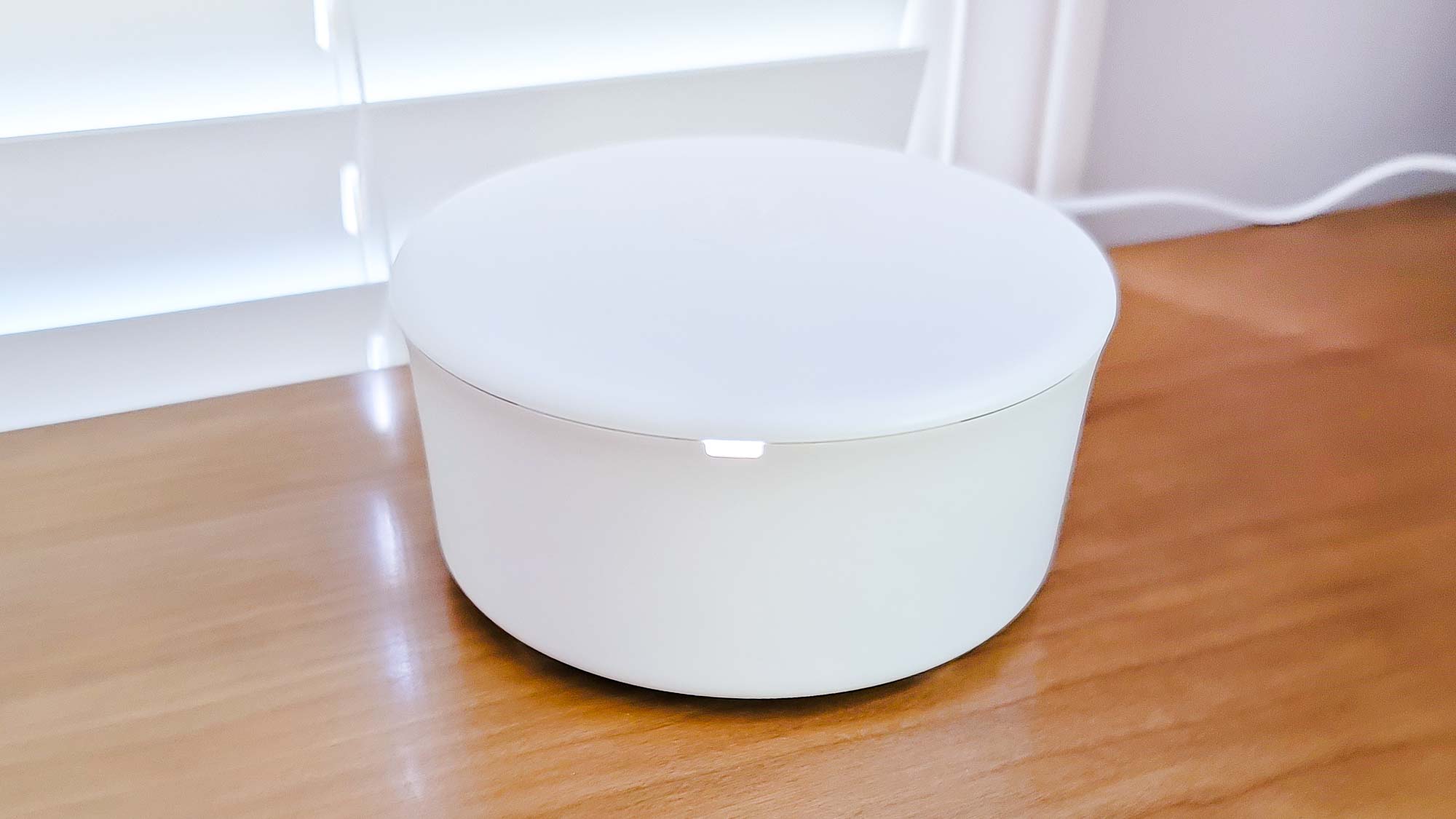
Still, it has all the right stuff for an 802.11AX router with MU-MIMO, beamforming and the ability to use wide 160MHz data channels for gamers or data hogs at home. In the back is a WAN broadband connection as well as a downstream wired Ethernet jack. Both networking ports are rated to handle 1Gbps streams, not the faster 2.5Gbps link competitors now include. There’s also no USB port for adding a storage device to your home network.
The Q11 uses a pair of dual-band antennas inside to move four streams of data and it maxes out at 3Gbps. Like Eero and others, Motorola uses a dynamic backhaul system that continually adjusts the flow to route the data over the least congested parts of the network. By contrast, Netgear dedicates a 5GHz band to communications from the nodes to the host router.
Under its slightly rounded lid, the Q11 has small ventilation slots to allow hot air to escape. It topped out at 97 degrees Fahrenheit, much cooler than the Eero Pro 6’s 124 degrees.
Motorola also adds built-in security software that can help keep your network clean and free of malware. This includes a malware scanner that continually looks for threats that might compromise your network. There’s also an ad blocker and content filter but the package lacks the computer-based antivirus software that Netgear includes with its Armor add-on for $100 a year. That said, Motorola doesn’t charge for its security software.
Motorola Q11 review: Performance
Using Ixia’s IxChariot networking benchmark software, we created a busy Wi-Fi network in my 100-year-old, 3,500-square-foot home. Using a Samsung Galaxy Book Pro as the receiving system and setting the software to simulate 10 data-hungry clients, the Q11 scored an initial win with excellent throughput up close but then lagged behind higher performing systems at longer distances.
At 15-feet, it moved 1.146 Gbps of data which is twice the throughput of Eero Pro 6’s 436.1Mbps or Linksys Velop AX4200’s 507.7Mbps and well ahead of Netgear Orbi RBR850’s 833.6Mbps. In fact, it is close to the performance of the best WiFi-6E routers that take advantage of the 6GHz data band.
| Row 0 - Cell 0 | Motorola Q11 | Eero Pro 6 | Linksys Velop AX4200 |
| 15 feet | 1.146Gbps | 436.1Mbps | 507.7Mbps |
| 50 feet | 169.6Mbps | 239.9Mbps | 201.3Mbps |
| 75 feet | 120.2Mbps | 208.9Mbps | 139.6Mbps |
| 90 feet | 15.9Mbps | 29.5Mbps | -- |
This excellent close-up performance turned disappointing when I moved the receiving system 50 feet from the router. The bandwidth dropped precipitously to 169.6Mbps, about one-third less than the Eero Pro 6’s 239.9Mbps. The Linksys Velop AX4200 was in between at a throughput score of 201.3Mbps.
With 75 feet between the router and test system, the Q11 moved 120.2Mbps, which was second best to the Eero Pro 6 (at 208.9Mbps), although just behind the Velox AX4200 (139.6Mbps). With a range of 95 feet, the Q11 was still able to move 15.9Mbps at 90 feet while the Eero Pro 6 delivered 29.5Mbps and lost contact at 105 feet. The Velop AX4200 was out of range and offline.
The Q11 redeemed itself with a throughput score of 982.3Mbps when the data signal was sent across a 25-foot room and through a wall to the receiving test system. This is more than double the 375.6Mbps that the Eero Pro 6 mustered under the same conditions and still ahead of the Orbi RBR850 router’s 782.9Mbps. The Velop AX4200 could move 525.7Mbps.
With the first satellite set up directly above the host router and the test system 40 feet down a hallway, the system moved 257.2Mbps. This was disappointing considering the Eero Pro 6’s 430.9Mbps and the Velop AX4200’s 437.5Mbps performance on this test. With the second satellite downstairs and the receiving system 40 feet away, the results were even less satisfying with a very low throughput of 55.8Mbps. This points to the Q11 doing better with the host router set up in a basement, pushing its data signal up into the rest of the house.
After nearly two weeks of daily use, the Q11 proved to be dependable, although I did need to restart its nodes once when they couldn’t find a strong signal from the router; it’s easy to do this remotely. I set up a ThinkPad T470 to play YouTube, a Macbook Air to listen to the BBC World News, and an HP Elitebook Folio to play Spotify. With this going on, I moved data onto and off a networked RAID storage system. During this test, the audio and video came through without a glitch or problem, passing our informal saturation test.
While in operation, each Q11 device used 7.8 watts of power. If you pay the national average of 14 cents per kilowatt hour of electricity, the Q11 three pack should cost about $29 a year to use, making it slightly cheaper than the Eero Pro 6’s $30.75 a year in estimated costs.
Motorola Q11 review: Setup
The Motorola Q11 can only be set up using the Motosync app. Created by Minim, it is available for iOS and Android devices and utilizes QR codes printed on the bottom of the Q11 devices. It took 14 minutes and 30 seconds to set up all three devices.
After getting and loading the app on my Samsung Galaxy Note 20, it was easy to create an account with Motorola and plug in the Q11 unit I wanted to use as the host router. When it was running, I snapped the unit’s QR code with the phone’s camera and watched the unit’s LED blink blue to show it was ready. Once its automatic configuration was done, I repeated the process for each of the satellites, one upstairs and one downstairs.
With the network created, I needed to input the type of house I had (single occupant home) and allow the network to optimize itself.
Finally, I added a network name and password. It all worked on the first try.
Motorola Q11 review: Configuration
As is the case with many mesh kits, configuration changes can only be done through the app. The Motosync app makes it simple to test the internet speed and check on the security software but it comes up short on configuration options. The interface’s main screen not only told me that my network was “terrific,” “magnificent” or “exceptional” but showed the connected nodes.
Below, the app showed lots of useful information, like how many devices are online. Tap on any to get more information, like their names or the satellite’s signal strength. There’s also an option to reboot the satellites.
Further down the main screen in the Motosync app is the Security center where you can see what the security software is scanning, results of recent scans, number of intrusions and any vulnerabilities found.
Meanwhile, the Home Filter can block ads and malicious websites as well as filter out adult websites. Each user can have their own profile for keeping track of internet use and filtering parameters.
While others provide the raw internet speed available, the Motosync app takes things a step further by adding checkmarks for various online activities to show if the current connection supports them.
For those with a monthly data limit, the Motosync app can track data use on a household or individual basis. There are ways to see it by the hour, day or week.
They range from web and music to gaming and 4K videos. On the downside, the Q11 lacks the ability to tweak its settings by changing its CTS/RTS threshold or the broadcast preamble. The Netgear Orbi RBKE963 allows both adjustments.
For those with a monthly data limit, the Motosync app can track data use on a household or individual basis. There are ways to see it by the hour, day or week.
At the bottom is a headset logo that leads to a direct chat link to the company’s support staff — it’s one of the best parts of the app.

The Settings link is one of the most powerful in Motosync, with the ability to turn the content filtering on or off as well as add users. At any time, a new node can be added and the app’s Advanced network settings lets you manage port forwarding.
It’s also where you can update the WiFi Optimization for the type of dwelling you live in. It’s surprisingly important because the use of 160MHz data channels is reserved for use with the Townhouse and Apartment setting. This performance technique can’t be used with the Single occupant home selection.
Unfortunately, there’s no printable Q11 manual. Instead, there’s a series of online topics to explore which range from adding an extender to resetting the units.
While the app has a direct chat link to Minim’s support staff, the help line is not staffed 24/7. There are people available to assist you from 8:30AM to 10PM ET.
The support lasts for the life of the gear, unlike Netgear’s 90-days of free support. Motorola’s two-year warranty also goes beyond Netgear and Eero’s one-year of coverage.
Motorola Q11 review: Verdict
If price and simplicity count for a lot in your quest for a home-wide mesh system, look no further than the Motorola Q11. At half what other mesh kits cost, it is straightforward to set up, easy to configure and includes an extra layer of security software that others charge for. If a problem comes up, its app has a built-in link to talk to Motorola’s support staff. However, the Q11 only has two LAN ports and no way to connect a storage device for network-wide access.
Still, it’s able to fill a small to mid-sized home with data for a lot less than the competition, with good enough performance to make the Q11 a winner for the cheapskates among us.
Brian Nadel is a freelance writer and editor who specializes in technology reporting and reviewing. He works out of the suburban New York City area and has covered topics from nuclear power plants and Wi-Fi routers to cars and tablets. The former editor-in-chief of Mobile Computing and Communications, Nadel is the recipient of the TransPacific Writing Award.

